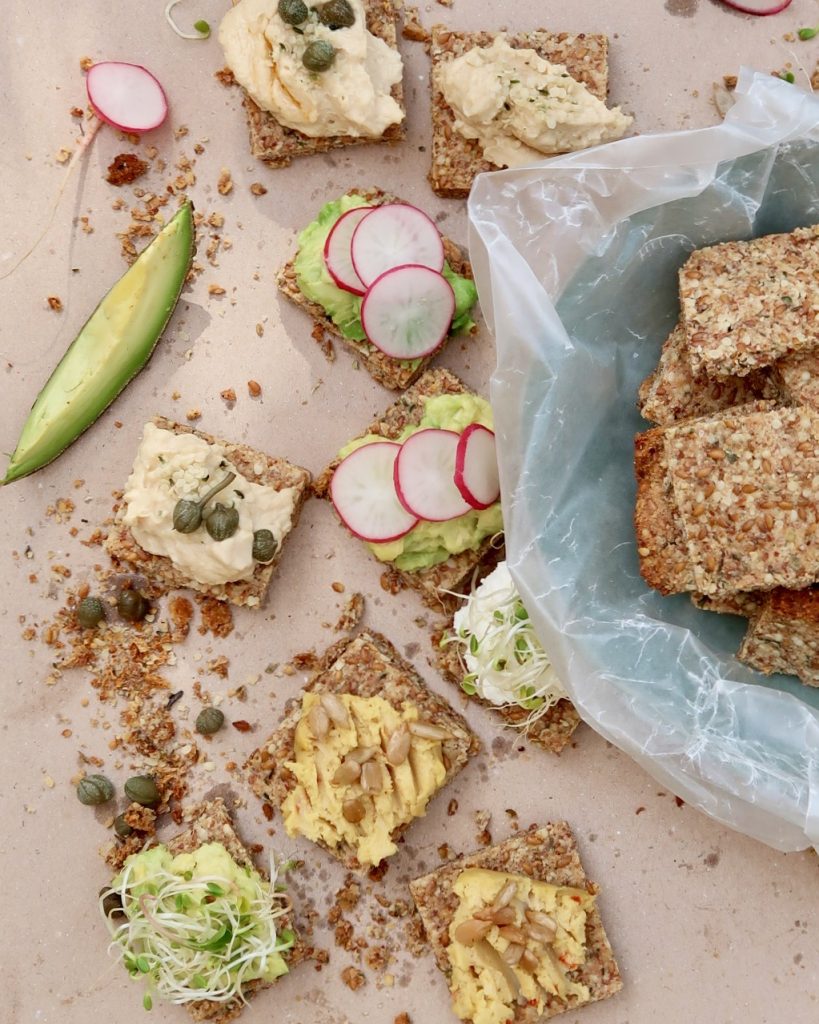Galina Denzel, co-author of Eat Well, Move Well, Live Well, knows a lot about nutritious eating. She creates fresh recipes for each month’s unique theme through their program at eatmovelive365.com! February is National Bake for Family Fun Month, so we have a cracker recipe from Galina to share that is both nutritious and fun to make.
Perfect Crackers
It may sound less than humble, but these have crunch, flavor, and protein and provide a solid base for a spread or mini hipster toasts—who wouldn’t call these perfect?
In the

For 4-8 servings
1/2 cup flax seeds, ground
1/2 cup flax seeds
1
1 cup unbleached almond meal
1/2 cup hemp seed
2 tbsp olive oil
1/2 tbsp sea salt
1 tsp dry oregano
1 tsp dry thyme
Substitute your own choice of herbs for different flavors
Directions
Start by mixing the flax and water and let it sit a while—an hour minimum, but overnight is best. The flax will soak up the water perfectly. Combine the other dry ingredients: hemp, almond, sea salt, and dry spices, and add olive oil. Use your fingers to work the ingredients
together into a thick paste. Combine with the two kinds flax, soaked from before. Once you have your mixture, spread
crumble. Enjoy the lovely crisp end pieces! You can serve these as they are or with dips and spreads on top. I imagine they last long in a cool dry place, but we never let them sit around more than a couple of days.



